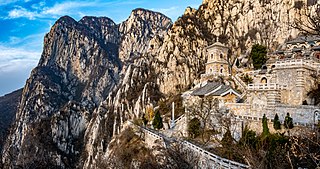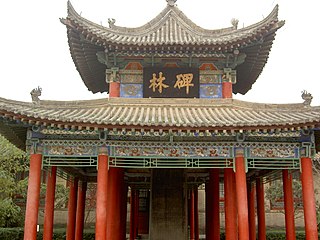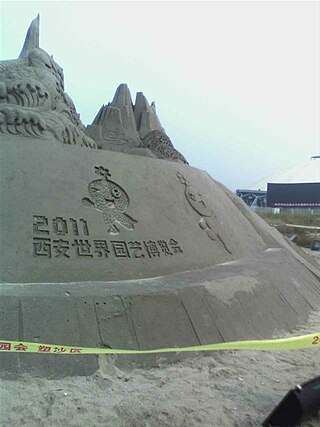The ManchusA are a Tungusic East Asian ethnic group native to Manchuria in Northeast Asia. They are an officially recognized ethnic minority in China and the people from whom Manchuria derives its name. The Later Jin (1616–1636) and Qing (1636–1912) dynasties of China were established and ruled by the Manchus, who are descended from the Jurchen people who earlier established the Jin dynasty (1115–1234) in northern China. Manchus form the largest branch of the Tungusic peoples and are distributed throughout China, forming the fourth largest ethnic group in the country. They are found in 31 Chinese provincial regions. Among them, Liaoning has the largest population and Hebei, Heilongjiang, Jilin, Inner Mongolia and Beijing have over 100,000 Manchu residents. About half of the population live in Liaoning and one-fifth in Hebei. There are a number of Manchu autonomous counties in China, such as Xinbin, Xiuyan, Qinglong, Fengning, Yitong, Qingyuan, Weichang, Kuancheng, Benxi, Kuandian, Huanren, Fengcheng, BeizhenB and over 300 Manchu towns and townships. Manchus are the largest minority group in China without an autonomous region.

Shaanxi is an inland province in Northwestern China. It borders the province-level divisions of Shanxi, Henan (E), Hubei (SE), Chongqing (S), Sichuan (SW), Gansu (W), Ningxia (NW), and Inner Mongolia (N).

Henan is an inland province of China. Henan is home to many heritage sites, including the ruins of Shang dynasty capital city Yin and the Shaolin Temple. Four of the historical capitals of China, Luoyang, Anyang, Kaifeng and Zhengzhou, are in Henan.

Shaanxi History Museum, which is located to the northwest of the Giant Wild Goose Pagoda in the ancient city Xi'an, in the Shaanxi province of China, is one of the first huge state museums with modern facilities in China and one of the largest. The museum houses over 370,000 items, including murals, paintings, pottery, coins, as well as bronze, gold, and silver objects. The modern museum was built between 1983 and 2001 and its appearance recalls the architectural style of the Tang dynasty.

The Stele Forest or Beilin Museum is a museum for steles and stone sculptures in Beilin District in Xi'an, Northwest China. The museum, which is housed in a former Confucian Temple, has housed a growing collection of Steles since 1087. By 1944 it was the principal museum for Shaanxi province. Due to the large number of steles, it was officially renamed the Forest of Stone Steles in 1992. Altogether, there are 3,000 steles in the museum, which is divided into seven exhibitions halls, which mainly display works of Chinese calligraphy, painting and historical records.

Xianyang is a prefecture-level city in central Shaanxi province, situated on the Wei River a few kilometers upstream (west) from the provincial capital of Xi'an. Once the capital of the Qin dynasty, it is now integrated into the Xi'an metropolitan area, one of the main urban agglomerations in northwestern China, with more than 7.17 million inhabitants. Its built-up area, consisting of 2 urban districts, had 945,420 inhabitants at the 2010 census. It has a total area of 10,213 square kilometers (3,943 sq mi).

The Small Wild Goose Pagoda, sometimes Little Wild Goose Pagoda, is one of two significant pagodas in Xi'an, Shaanxi, China, the site of the old Han and Tang capital Chang'an. The other notable pagoda is the Giant Wild Goose Pagoda, originally built in 652 and restored in 704. This pagoda, along with the Giant Wild Goose Pagoda and other sites along the Silk Road, was inscribed in 2014 on the UNESCO World Heritage List as the Silk Roads: the Routes Network of Chang'an-Tianshan Corridor World Heritage Site.

Baoji is a prefecture-level city in western Shaanxi province, People's Republic of China. Since the early 1990s, Baoji has been the second largest city in Shaanxi.
Xi'an has a rich history dating back to more than 6000 years ago. The below is a detailed discussion on the city's history. See also Xi'an.

A Chinese palace is an imperial complex where the court, civil government, royal garden and defensive fortress resided. Its structures are considerable and elaborate. The Chinese character gong represents two connected rooms (呂) under a roof (宀). Originally the character applied to any residence or mansion, but it was used in reference to solely the imperial residence since the Qin dynasty.

Beilin District is one of 11 urban districts of the prefecture-level city of Xi'an, the capital of Shaanxi Province, Northwest China. It is named after the well-known Xi'an Stele Forest, and Small Wild Goose Pagoda is also located in the district. The smallest, but most densely populated, of Xi'an's county-level divisions, it borders the districts of Xincheng to the northeast, Yanta to the south, and Lianhu to the northwest.

Weiyang District is one of 11 urban districts of the prefecture-level city of Xi'an, the capital of Shaanxi Province, Northwest China. It is located at northwest Xi'an, functioning as the new administrative centre of the city. The district borders Baqiao District to the east, the city of Xianyang to the west, Xincheng District and Lianhu District to the north, as well as Yanta District and Changan District to the southwest. The geographical coordinates are 34°14'50''N ~ 34°26'22''N, 108°47'08''E ~ 109°02'21''E, and the total area is 264.41 square kilometers. By November 11, 2020, the total population of permanent residents in the district is 733,403, taking up around 5.66% of the city's population.

Lantian County is a county under the administration of Xi'an, the capital of Shaanxi province, China. It is the easternmost and second-most spacious of the 13 county-level divisions of Xi'an. The county borders the prefecture-level cities of Weinan to the northeast and Shangluo to the southeast, Lintong District to the north, Chang'an District to the west, and Baqiao District to the northwest.

Xi'an–Chengdu high-speed railway or Xi'an-Chengdu Passenger Dedicated Line, is a dual-track, electrified, high-speed rail line in Western China between Xi'an and Chengdu, respectively the provincial capitals of Shaanxi and Sichuan. This line, which commenced operations on 6 December 2017, runs 510 km (320 mi) through Shaanxi and Sichuan provinces and accommodates trains traveling at speeds up to 250 km/h (160 mph). Travel time between the two provincial capitals was reduced from 16 to less than three hours.

Xi'an China International Horticultural Exposition 2011 is a horticultural exhibition recognised by the International Association of Horticultural Producers in Xi'an, China to be held between 28 April and 22 October 2011. During the 178-day exhibition, the tourists were anticipated to top 12,000,000. And there are 109 outdoor exhibition houses altogether. Kerry Berry Brogan served as the International Green Ambassador.

Xi'an railway station is one of the two main passenger railway stations of Xi'an, the capital of China's Shaanxi Province. Located on the Longhai Railway and just to the north of Xi'an's historical walled city, the station had long been the main train station for the Xi'an metropolitan area. With the opening of Xi'an North railway station on the northern outskirts of the city in 2011, most of the high-speed services, including the G- and D-series trains of the Zhengzhou–Xi'an high-speed railway, have been transferred to the new station. Xi'an railway station remains the main station for all conventional rail service in the city, including the overnight Z-series expresses, T-series express trains, and all slower services.

Silk Roads: The Routes Network of Chang'an-Tian Shan Corridor is a UNESCO World Heritage Site which covers the Chang'an-Tianshan portion of the ancient Silk Road and historical sites along the route. On June 22, 2014, UNESCO designated a 5,000 km stretch of the Silk Road network from Central China to the Zhetysu region of Central Asia as a World Heritage site. The corridor spans China, Kazakhstan and Kyrgyzstan and includes 33 new sites and several previously designated heritage sites.

In 2001, the Institute of Archaeology of the Chinese Academy of Social Sciences organized a poll for China's 100 major archaeological discoveries in the 20th century. The participants included eight national-level institutions for archaeology and cultural relics, provincial-level archaeological institutes from 28 provinces, municipalities, and autonomous regions, as well as from Hong Kong, the archaeological departments of 11 major national universities, and many other scholars in Beijing. After three months and three rounds of voting, the results were announced on 29 March 2001 and were published in the journal Kaogu (Archaeology). In 2002, the Chinese Academy of Social Sciences Press published the book China's 100 Major Archaeological Discoveries in the 20th Century (二十世纪中国百项考古大发现), with more than 500 pages and 1,512 pictures.

Daci'en Temple is a Buddhist temple located in Yanta District, Xi'an, Shaanxi. The temple is the cradle of East Asian Yogācāra in China. It is notable for the Giant Wild Goose Pagoda. The pagoda was originally built under the supervision of the monk Xuanzang, whose pilgrimage to India inspired the novel Journey to the West. Alongside Daxingshan Temple and Jianfu Temple, it was one of the three sutras translation sites (三大译经场) in the Tang dynasty.

Xiangji Temple is a Buddhist temple located in Chang'an District of Xi'an, Shaanxi. The temple is regarded as the cradle of Pure Land Buddhism.



























































